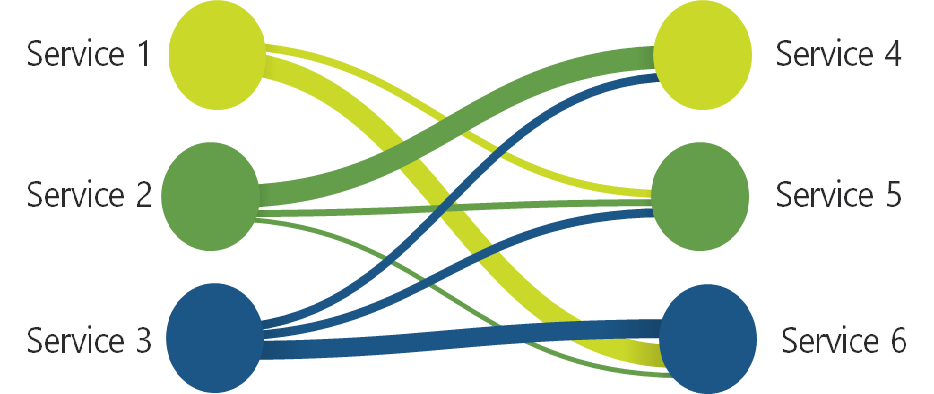When evaluating communication between different systems, there is always an argument of choosing between an API-first approach and an event-first approach. In a distributed ecosystem, it’s not one or the other, but the combination of both these strategies that can solve data transmission between one or more systems.
API’s are the de facto way of interacting for synchronous operations. That means performing tasks one at a time in sequential order. When designing systems with a specific responsibility, APIs shield the underlying systems from being accessed directly and expose only the reusable data, thus ensuring no duplication of data happens elsewhere. When using simple API’s all that is needed is a readable API structure and systems that follow a request and response pattern. API’s are beneficial in the case of a real-time integration where the requesting system needs information abruptly.
However, designing and Scaling APIs can also get intricate. In high transactions microservices architecture, throttling and caching of APIs are not simple as APIs need to scale on-demand. Also, in such integrations, API gateway becomes necessary to make the systems loosely coupled.
The below example depicts a reporting system that creates different reports based on the Customer, Order, and Catalog data. The source system exposes an API. The reporting system fetches the data via the API and sends the information to the underlying destination systems.
This architecture looks fine if there are no changes to the Information from the source systems. But, if the order information has properties that keep getting updated, then the Reporting system needs to have the capability of ensuring that the changed state gets updated in subsequent systems.
Handling Cascading Failures
In a chain of systems that interact using APIs, handling errors or failure can also become cumbersome. Similarly, if there are multiple dependent API calls between two systems, the cascading failures become complex. The complexity further increases when there is a need for systems to react based on dynamic state changes. This is where Event-based architecture can help address some of the issues.
The basis of Event-based strategy is asynchronous means of communication. There is an intermediate system that decouples the source and the destination service interfaces. This strategy is apt for applications that need near real-time communication and when scalability is a bottleneck.
With an Event-based architecture, all the source system has to do is adhere to a contract, and on any state changes, trigger a message to the intermediate broker system. One or more destination systems can subscribe to the broker system to receive messages on any state changes. Also, since the source system triggers an event, the scalability of the APIs is not an issue.
 |
| Event First Architecture |
With a pure Event-based architecture with an increase in the number of messages, the architecture can get complicated. Tracking the statuses of a message if they are processed or not becomes tricky. In this case, every order tracking needs to happen for the latest state, and error handling needs to be robust. Also, this entire process is slow and there is a huge latency between the end-to-end systems.
Another way of simplifying the architecture is by combining API and the event design. The below diagram illustrates that the Reporting system interacts with the Order system using both API and events. The Order system sends the state change notification to the broken. The Reporting system reads the state change and then triggers an API call to update the Order information. The reporting system makes API calls to the Catalog and Customer systems to fetch the static data. It can further push the created destination messages to consume using the event broker.
In conclusion, both API and events have their pros and cons and solve a specific problem. They are not a replacement for one another and architecture can be made less complex if they co-exist. In a modern micro-services architecture to have both of them handy can help ease distributed system interaction complexities.













